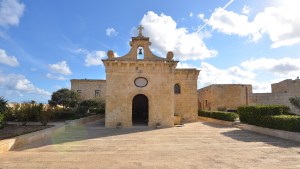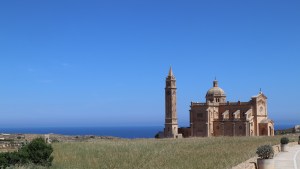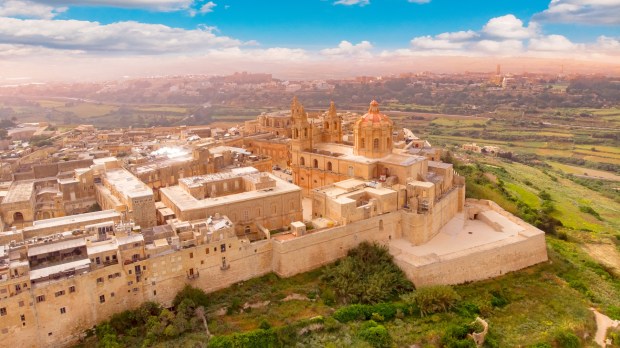The Catholic Church encompasses a rich, diverse tapestry of spiritual, cultural, and artistic traditions and expressions. It also uses various types of sacred spaces, which play distinct roles within its tradition. Among these spaces, cathedrals, basilicas, shrines, parishes, chapels, and hermitages hold special significance. While they all serve as places of worship, they differ in terms of their purpose, size, hierarchy, and function within the Church.
A cathedral is the principal church of a diocese – which is a division of the Church led by a bishop. Cathedrals are usually grand in scale and architectural design, reflecting the importance of the bishop’s seat and serving as the focal point for major liturgical events. In a Cathedral, one finds the seat of the bishop, the Sedia Vescovile. The Bishop heads the local Christian community in its journey.
Tradition maintains that the first Bishop of the Maltese Islands was the Roman, Publius. Paul was shipwrecked off the northwestern coast of Malta on his way to trial in Rome in the year 60. He was forced to spend the winter months there. It was during those three months when he established the roots of Maltese Christianity — Christianity in the archipelago thus being as ancient as in Ephesus, Jerusalem, Corinth, and Rome itself.
Publius was then the acting governor of the Roman Melita. Chapter 28 of the Acts of the Apostles narrates how Paul healed the governor’s father during his three-month stay on the Island. Luke writes:
Once safely on shore, we found out that the island was called Malta. The islanders showed us unusual kindness. They built a fire and welcomed us all because it was raining and cold. Paul gathered a pile of brushwood and, as he put it on the fire, a viper, driven out by the heat, fastened itself on his hand. When the islanders saw the snake hanging from his hand, they said to each other, “This man must be a murderer; for though he escaped from the sea, the goddess Justice has not allowed him to live.” But Paul shook the snake off into the fire and suffered no ill effects. The people expected him to swell up or suddenly fall dead; but after waiting a long time and seeing nothing unusual happen to him, they changed their minds and said he was a god.
There was an estate nearby that belonged to Publius, the chief official of the island. He welcomed us to his home and showed us generous hospitality for three days. His father was sick in bed, suffering from fever and dysentery. Paul went in to see him and, after prayer, placed his hands on him and healed him. When this had happened, the rest of the sick on the island came and were cured. They honored us in many ways; and when we were ready to sail, they furnished us with the supplies we needed.
Acts 28:1-10.
Tradition holds that the present cathedral in Mdina was built in the same area where Publius’ residence was. Since then, a 2000-year-old uninterrupted Christian presence has shaped the spiritual, cultural, and artistic landscape of the Maltese islands.
One of Publius’ successors, a bishop who hundreds of years later left a great impact on the local ecclesiastical history (and, thus, on Maltese Christianity) was Bishop Domenico Cubelles.
Bishop Cubelles is better known for instituting one of Malta’s pilgrimage walks, the noted Universal Peace Walk, the Pro Pace Universali Cammino. This pilgrimage walk probably started as a votive pilgrimage at the turn of the 16th century before the arrival of the Knights of St. John in Malta. It was then adopted by Bishop Cubelles as an ecumenical peace pilgrimage in 1543, hence the name, Pro Pace Universali.
Socio-politics in the late Middle Ages
Why was this walk of socio-political importance in medieval Europe?
The Middle Ages saw the creation of a new world order: the collapse of the Roman Empire in the 5th century AD, the establishment of the Holy Roman Empire in the 9th century, the schism with the Eastern Churches at the turn of the 1st millennium, the Roman Christian retreat from the Holy Lands following the Crusades in the 13th century and, finally, the concentrated effort of the Spanish Reconquista from the 8th the 15th century, followed by wars on Europe’s eastern and Mediterranean fronts to stem the Ottoman westward expansion.
The Protestant reformation during the 15th and 16th century pitted one nation against the other, threatening to fragment the fragile peace that existed across a once united Europe. The indirect result of such reforms was war between nations (especially in Bohemia, the Germanic states, France and England) from the mid-15th to the mid-17th century.
Pope Paul III sought to spare Europe from the ravages of war and called a general council in Mantua in 1536, to try to reconcile the forces of tradition and reform. Sadly, this did not come to pass, and wars across Europe lasted about 150 years. Germany alone, for example, lost almost a third of its inhabitants because of the 30 Years’ War, which ended in 1648. But a rose grew from the thorns of war as Europeans, realizing the ruin they had brought upon themselves, recognized all Christian traditions as their common heritage and the Holy Roman Empire embraced all as official religions within the union, heralding again a period of relative peace in central Europe.
In that sense, it is fair to say that the Universal Peace Walk was more of a socio-political peace walk than an ecumenical pilgrimage – at least at its inception. Indeed, the walk was instituted with the intention of universal peace in Europe, after the failure of the Council of Mantua, and in preparation of a new council in Trent in 1545.
Nowadays, pilgrims walk this Camino with the very same intentions: those of finding peace within themselves, with those whom they share the road, and with those they pray for while walking this inspiring pilgrimage path.
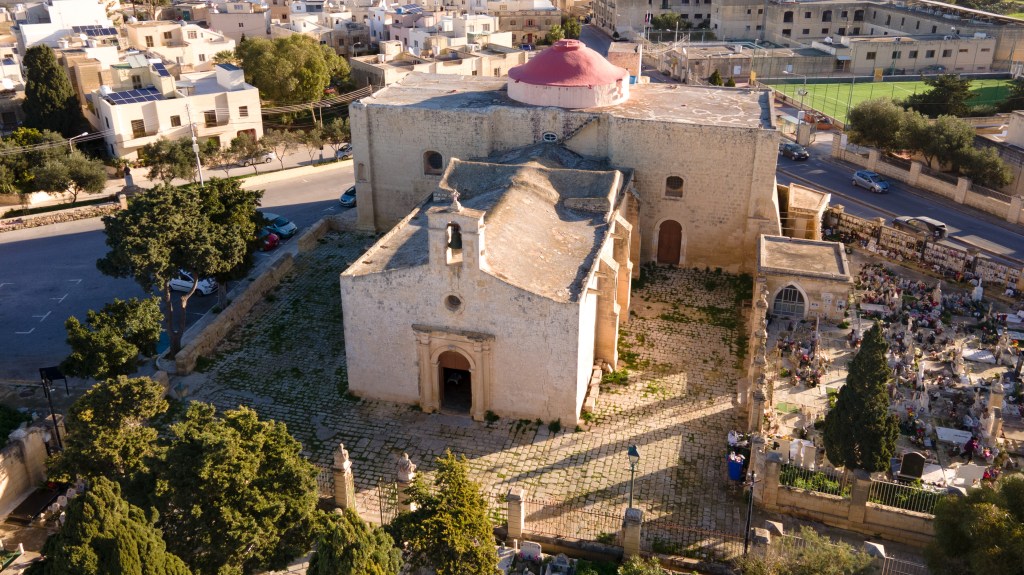
This cammino covered around 28 kilometers, going from the outstanding cathedral of the old city, Mdina (the notabile “Silent City”) all the way to the Southernmost parish in the archipelago, in Zejtun, the Terre di Santa Caterina. But this original 1543 route changed over the years, as more parishes were established throughout the archipelago. In fact, today’s pilgrims can walk the original route, while also incorporating all the original parishes from the 1436 Rollo de Mello that remained after Dusina’s visit. For example, by the mid-17th century it was more of a ‘palm and fronds’ design with pilgrimages meeting in Paola (Casal Nuovo) to walk through one of the then newer parishes (Tarxien, 1592) towards Zejtun. Because the walk ended at the old church of St. Catherine (known locally more as St. Gregory’s), the pilgrimage became known colloquially as il-pellegrinagg ta’ San Girgor – Saint Gregor’s Pilgrimage. The pilgrimage ended there because the church and its lands were the property of the Cathedral of Mdina.
The Universal Peace Walk today
XirCammini, a voluntary organization registered in Malta, has recreated the original 1543 walk from Mdina to Zejtun within present-day urbanization realities. The walk is supported by a free downloadable app, guidebooks, Credencial and Testimonium. The Malta Tourism Authority has funded this private, voluntary initiative.
The walk goes through various towns and parishes that existed in 1543. Some of these, such as Zebbug, Siggiewi, Zurrieq, Bir Miftuh (Gudja) and Zejtun are listed as parishes in the 1436 census of Bishop Senatore de Mello – again, the Rollo de Mello. Others, such as Qrendi and Ghaxaq were then part of older parishes.
Notable shrines, churches and sanctuaries en-route include:
- The Parish Church of St, Philip of Agira in Zebbug
- The Parish Church of St. Nicholas of Bari, Siggiewi
- Our Lady of Providence, Siggiewi
- Church of St. Matthew the Evangelist Maqluba, Qrendi
- Sanctuary of Our Lady of Mercy, Qrendi
- Annunciation Church, (medieval church), Hal Millieri, Zurrieq
- Parish Church of St. Catherine of Alexandria, Zurrieq
- Parish Church of Bir Miftuh (Heritage site), Gudja
- Parish Church of the Assumption of Mary, Ghaxaq
- Basilica of St. Catherine of Alexandria, Zejtun
- St Gregory’s Church, (medieval church), Zejtun
A guidebook providing an explanation of each of the 26 highlighted waypoints along the route helps pilgrims learn about the history and Christian heritage and devotions behind this walk. A Credencial incorporated into the guidebook provides an opportunity to collect stamps while on this Camino.
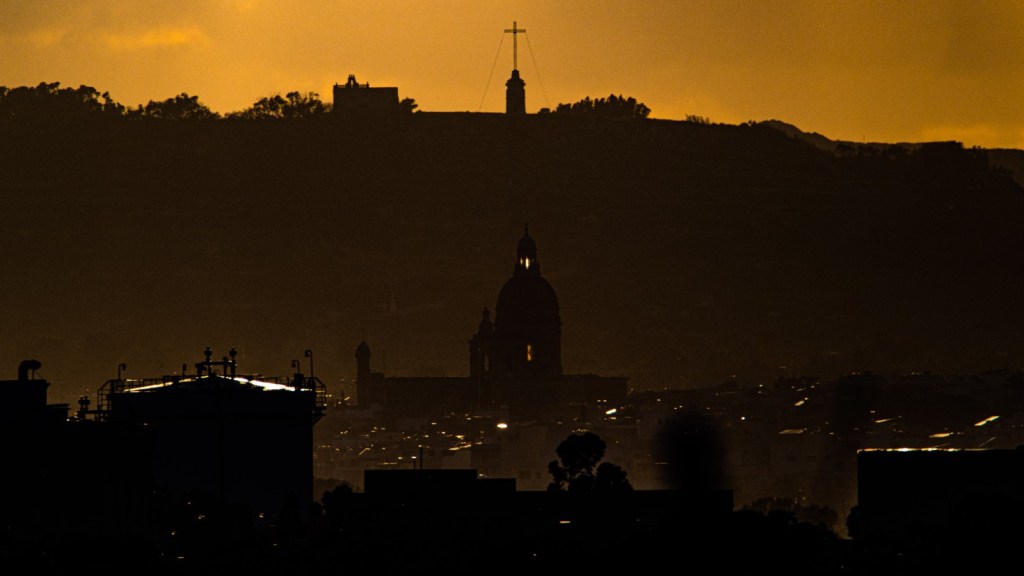
At the end of the walk, a testimonium (certificate of completion) is provided to pilgrims. The Malta Tourism Authority, through its tourist offices is helping XirCammini with the distribution of guidebooks, Credencials, and certificates.
Interested in a pilgrimage?
XirCammini helps individuals or groups walk the Caminos. Contact us on information@XirCammini.org or via WhatsApp on +35679046942. We are a not-for-profit organization dedicated to historical and faith-related walks in Malta and Europe – registered as a Voluntary Organization (VO1646) with the Office of the Commissioner for Voluntary Organizations, Malta.
This content has been brought to you in partnership with the Malta Tourism Authority.
